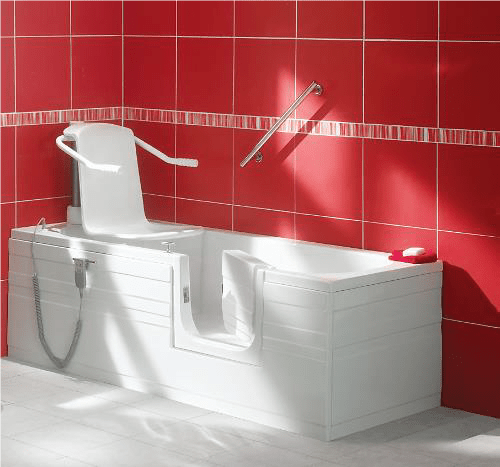Trying to design a bathroom that will suit your needs might involve lots of reconfiguration of the current layout, but just how easy is it to rearrange everything in your washroom?
It is certainly easier and cheaper to keep the bathroom, sink and toilet where they currently are, as installers do not have to alter the plumbing and can just connect new appliances where they old ones were fitted.
However, those who are designing a bathroom with people who have limited mobility in mind could find it would be beneficial to swap the basin and toilet around, swap the bath for a walk-in shower or move the shower where the sink once was.
The one thing disabled people really need is plenty of space to move around or position their walking aids, so a bathroom that has lots of parts sticking out is not ideal. Having appliances flush against one wall might be better, as this frees up space on the other walls.
Well, the good news is that rearranging furniture in a bathroom is very much possible, and if you have an unlimited budget, you can position things just where you need them to be. Fitters simply need to work out where the draining and water pipes are and, if necessary, move them to the new location.
It might involve opening walls, the floor or even the level below to access or move drainpipes. This means you have to consider repairing the damage caused, including replastering and repainting.
Consequently, this is not a job you are likely to be able to do yourself, unless you are very adept at DIY. To make sure no mistakes are caused and to avoid any future plumbing problems, it is best to use professional plumbers. An experienced fitter will be able to assess the room and let you know the best solution, if your dream design is not possible or will blow the budget.
It is also important to consider the ‘surprise costs’, as well as the expected ones. You can set aside money for the renovation expenses, but also prepare to spend more than this.
Architectural Digest told readers there are always ‘surprise costs’ when it comes to moving toilets, sinks and showers, as the condition of the drain, vent and water pipes cannot be determined until the work begins. Your entire plumbing might need to be replaced, the floor joists do not go in the right direction, or the waste lines cannot be rerouted easily, which will all cause the bills to escalate.
Nick Schiffer, owner of NS Builders, told the publication: “A lot of the work is under-floor work: pulling up the subfloor and reworking the plumbing in between the floor joists. It’s generally more expensive because you’re adding additional time for the plumbing to be on site and additional materials.”
For instance, a plumber moving appliances when refitting a bathroom could take three to five days, as opposed to a day and a half if they are keeping everything where it is.
However, if the current layout does not work for you, then changing it might be the only solution. In this case, the good news is plumbers are most likely able to change the plumbing in a bathroom just the way you want it.
Find out about accessible bath solutions here.

